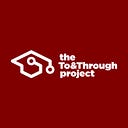Communities in Chicago are working to solve the challenges they face. Are we giving them the right tools to do it?

Chicago has a rich ecosystem of community-based organizations (CBOs) striving to raise educational attainment rates for students from their community areas. The expansion of high school choices outside of students’ communities over the past two decades has complicated their work.
Jessica Cañas is the Assistant Director of Education at Enlace Chicago, a CBO dedicated to making profound, positive differences in the lives of those who reside in Little Village, a neighborhood on the Southwest Side. “[Part of] our work is centered around our neighborhood high schools and making sure that they are [appropriately] funded and have the resources needed to provide a quality education for Little Village students,” explained Cañas.
Her colleague Leticia Diaz, Resource Coordinator at Enlace Chicago, helps lead this work. “We’re having a transition program for middle school youth going to high school… like really creating a home base at their high school,” said Diaz. The program introduces students to self-advocacy tactics aligned with the unique policies and opportunities within their local high school, as well as frank conversations about how to foster Black and Brown unity.
“[But] I think that it’s sort of an ideal to be able to attend the school that’s down your block,” noted Cañas.
“I think that it’s sort of an ideal to be able to attend the school that’s down your block.” —Jessica Cañas
According to a recent study from the To&Through Project and UChicago Consortium, fewer than one in four CPS ninth-graders enrolled in their assigned neighborhood school during the 2018–19 school year. Among CPS ninth-graders from South Lawndale, the community area that includes Little Village, only about one in five enrolled in their assigned neighborhood school in 2020–21.[1]
As a result, local high school outcomes have become, on average, inadequate measures of the educational experiences for students that live in a given community area in Chicago — rendering it impossible for most CBOs to accurately evaluate the quality of education and supports provided to their community’s students and exhaustively identify their unaddressed needs.
Local high school outcomes have become, on average, inadequate measures of the educational experiences for students that live in a given community area in Chicago.
Yet after developing the Little Village Quality of Life Plan in 2013, Enlace Chicago identified the need for key community-based stakeholders to evaluate these issues, plan strategic improvements, and support legislative changes that expanded educational access and opportunity from “birth to old age.”[2] In response, they organized the community-based collective called the Little Village Education Collaborative (LVEC).
In their 2017 report, “Little Village College Enrollment Report: Where Data Calls for Social Change,” LVEC used quantitative data from the To&Through High School Milestones Tool to clarify patterns in the community’s college readiness, application, and enrollment trends. Using the tool, report author Cañas explored data for the six Chicago Public Schools (CPS) high schools in Little Village.
While this research approach provided the best approximation for local trends using available data at the time, it also highlighted a limitation of publicly available education data in Chicago: it does not provide student outcomes from a geographic perspective. With only about one in five ninth-graders in South Lawndale enrolling in their assigned neighborhood school, these local high school outcomes were inadequate measures of the educational experiences for South Lawndale students.
The publicly available To&Through Community Milestones Tool was developed in recognition of the fact that community-led efforts like LVEC have historically been denied data tools and resources needed to maximize their impact, as well as the foundational belief that communities possess the knowledge and abilities to solve the challenges that they face.
The publicly available To&Through Community Milestones Tool was developed in recognition of the fact that community-led efforts like LVEC have historically been denied data tools and resources needed to maximize their impact.
Using the To&Through Community Milestones Tool, CBOs can more accurately track the impact of that work as well as the work of schools outside of their community serving their students. “If we have these many students in Little Village going to selective enrollment, or going to the other schools that supposedly offer more opportunities and resources, how is that really impacting college attainment in the community overall?” wondered Cañas.
One in 10 CPS ninth-graders from South Lawndale enrolled in a selective enrollment high school in 2020–21, and more than four in 10 enrolled in neighborhood schools other than the one to which they were assigned.[3] “If we’re not seeing an increase in college attainment, then are we really sharing all the information needed for families to make the best choice possible for their children?” she continued.

The To&Through Community Milestones Tool provides a starting point for digging into questions like these. When coupled with local relationships and a deep understanding of a community area’s context, the data on the tool can equip Chicago’s community-based practitioners, educators, and leaders with vital feedback on how they may be able to help students leverage community assets and navigate potential barriers on their paths to and through high school and college.
Check out the To&Through Project user’s guide for understanding the data provided on the To&Through Community Milestones Tool, along with questions that can guide explorations of educational outcomes at a community level.
A portion of the text for this article was taken from the report Approaching Chicago Student Attainment from a Community Perspective published by the To&Through Project and the UChicago Consortium.
[1] The To&Through Community Milestones Tool
[2] Cañas (2017).
[3] The To&Through Community Milestones Tool
